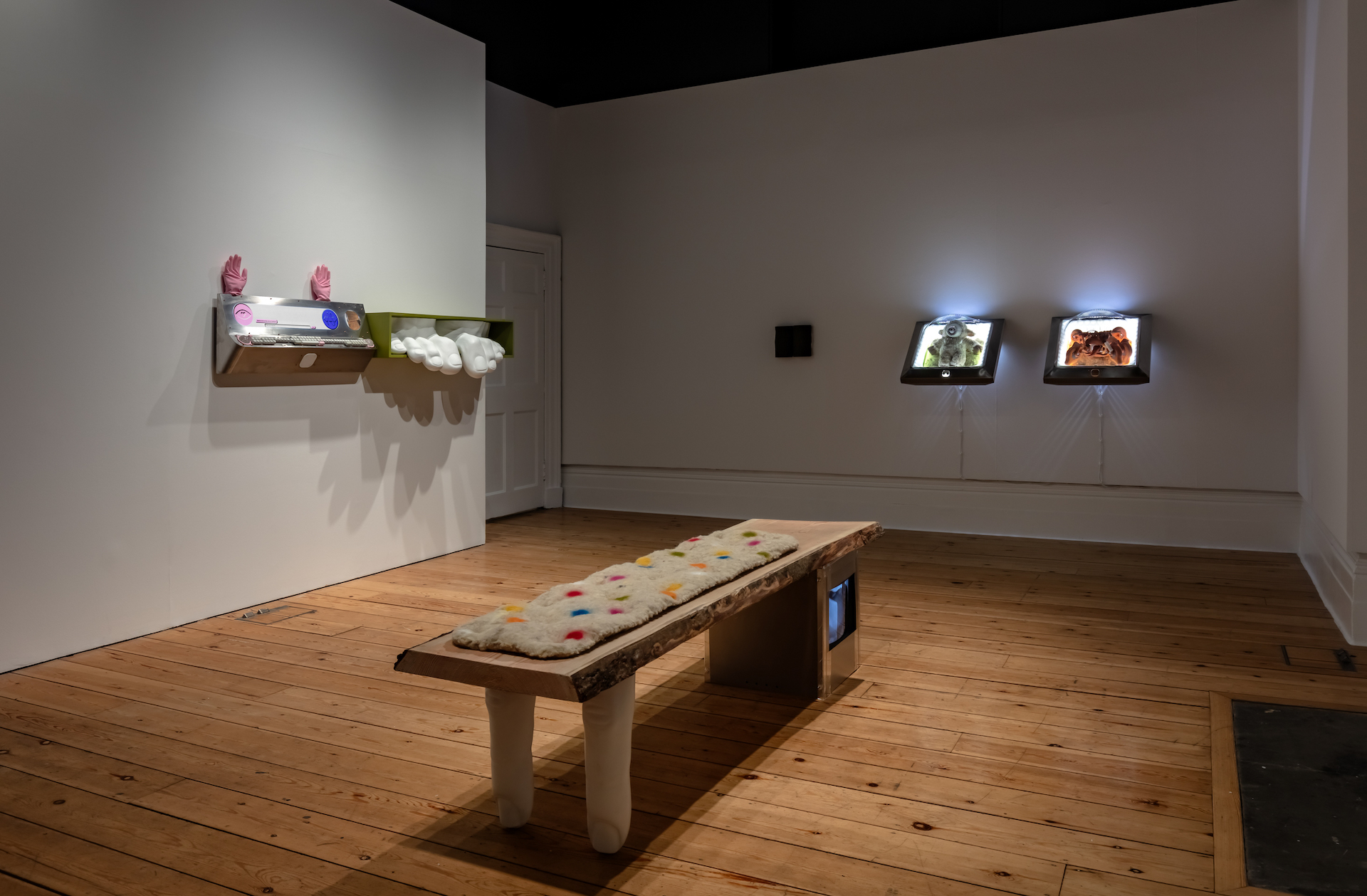
To encounter Morlæ’s work is to enter into a theatrical uncanny, each piece functioning as a character drawing our attention to the accumulated traces of technology that surround us.

SFB1 is a relic of a future so untethered from pragmatic reality that rules such as gravity no longer apply. A bombastic contraption, it comes across like a safety feature for a tilting reality, designed to catch those in freefall.

Rather than terrifying his viewer with hard-edged dystopian visions and unknowable but pervasive technologies, Morlæ offers an open-armed welcome to travel with him into a not so distant future.

These works are not so much confrontations with animatronics and artificial intelligence as thought experiments about a future where these technologies are inevitable.

Antonia Blocker is a London-based curator and writer who has held curatorial positions at Zabludowicz Collection, Whitechapel Gallery, ICA, the Serpentine and most recently, Modern Art Oxford where she was Acting Head of Exhibitions. She is particularly interested in performance and supporting artists who work in disruptive, imaginative, and expansive ways, who are not well platformed by traditional exhibition structures.
___
¹ S Ngai, Our Aesthetic Categories: Zany, Cute, Interesting, Cambridge, MA & London: Harvard University Press, 2012, 58.

